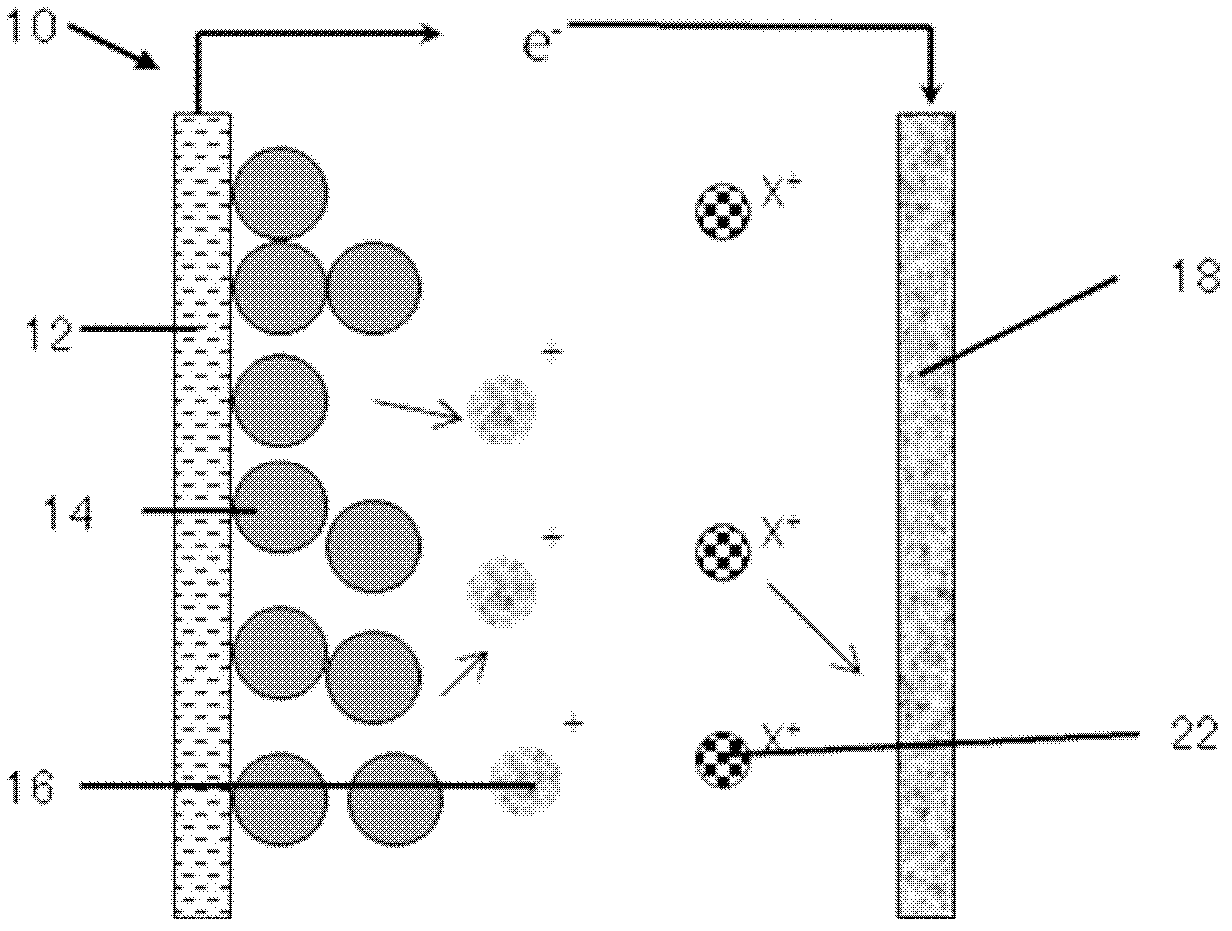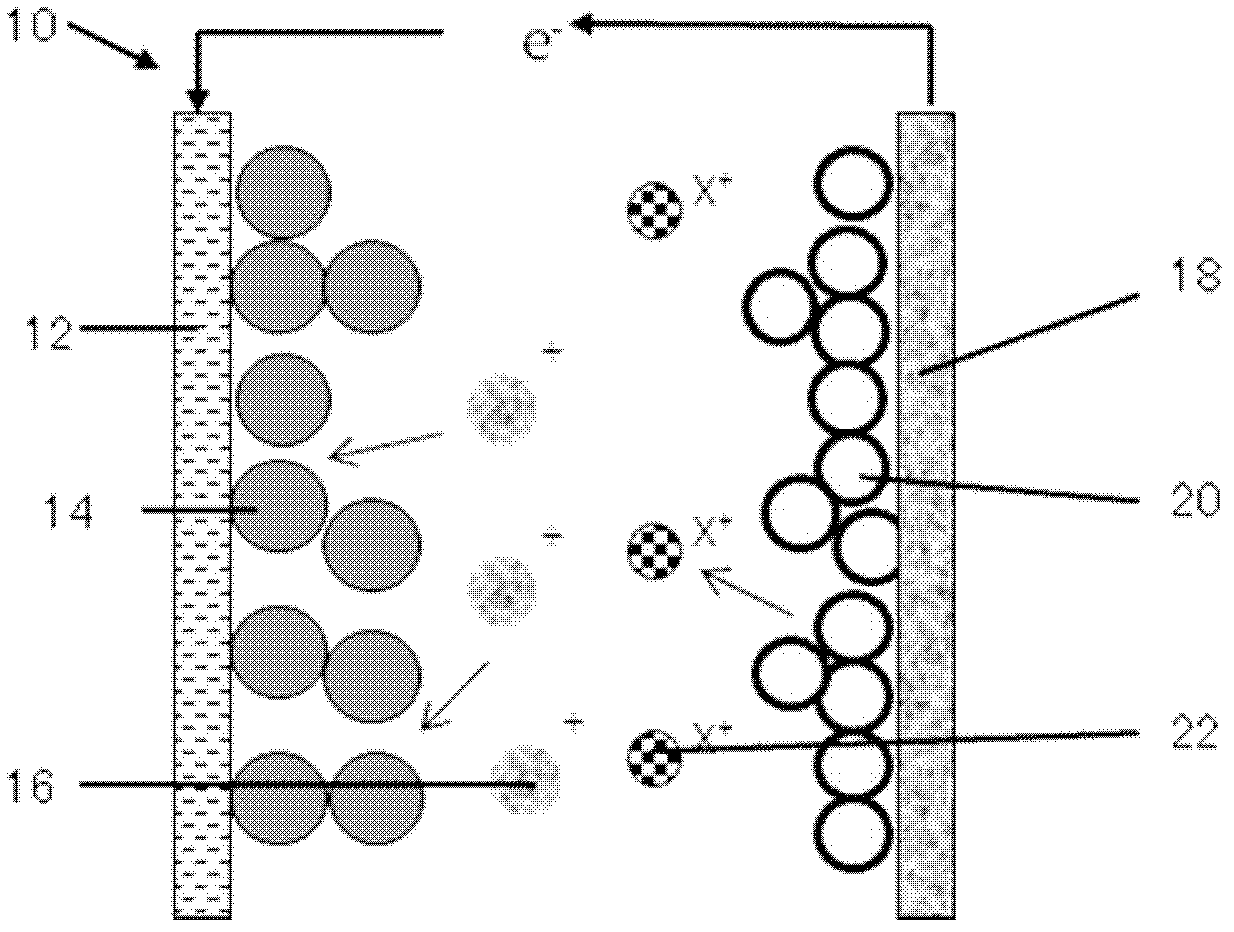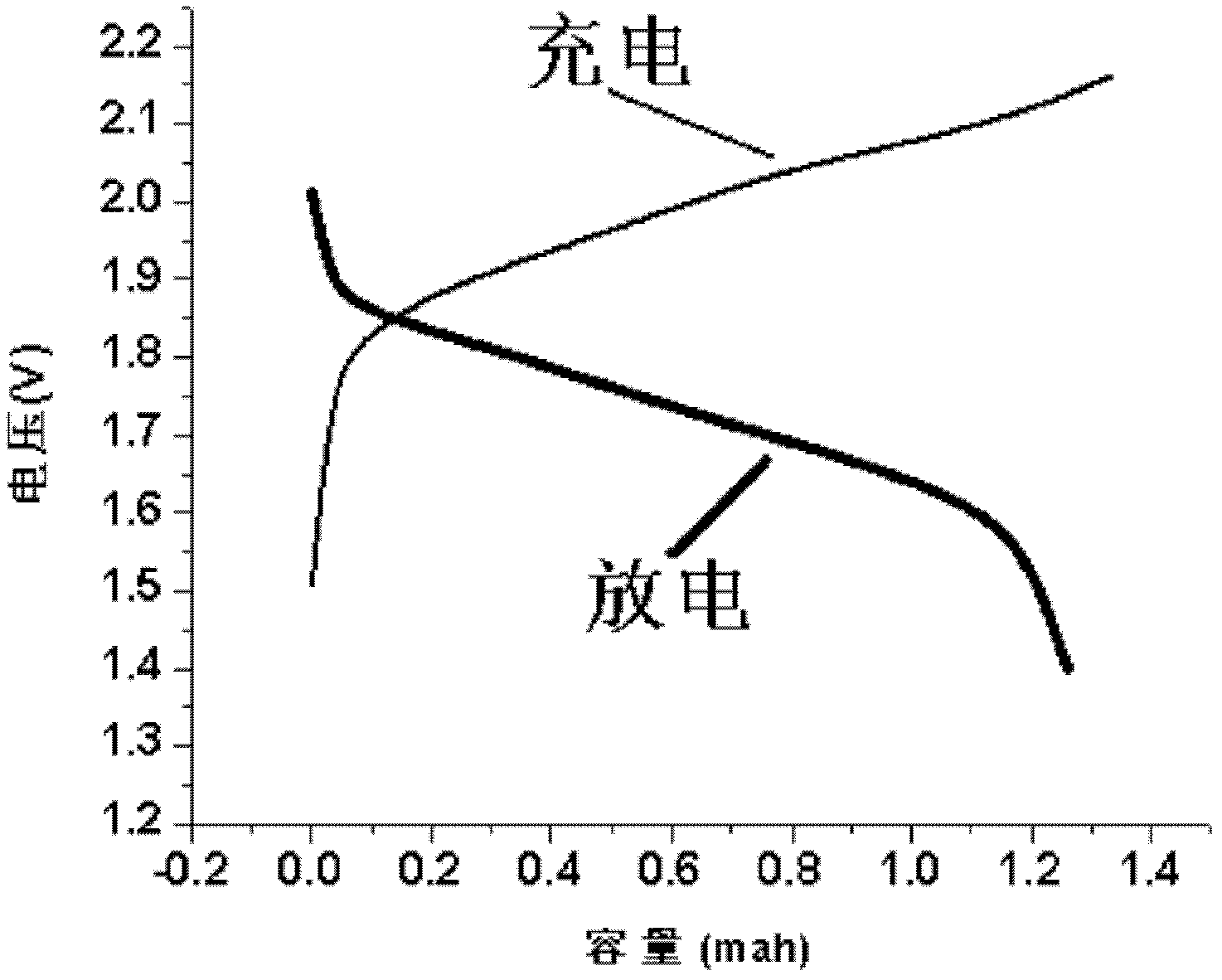Battery
A battery and electrolyte technology, applied in the field of electrochemical energy storage, can solve the problems of high technical threshold, inability to meet simultaneously, and high price, and achieve the effects of clear work content, excellent cycle performance, and low production cost
- Summary
- Abstract
- Description
- Claims
- Application Information
AI Technical Summary
Problems solved by technology
Method used
Image
Examples
Example Embodiment
[0087] Example 1
[0088] The embodiments in this category are divided into 4 embodiments, respectively illustrating that different lithium or sodium ion deintercalation compounds can be used as the positive electrode active material of the battery of the present invention, but the protection scope of the present invention is not limited to the scope of these embodiments. Examples 1-1, 1-2, 1-3 and 1-4 can prove the correctness of the principle of the present invention to those skilled in the art.
Example Embodiment
[0089] Example 1-1
[0090] Take LiMn 2 O 4 It is the positive electrode active material, according to the ratio of 90% positive active material: conductive carbon black 6%: binder SBR (styrene butadiene rubber latex) 2%: thickener CMC (sodium carboxymethyl cellulose) 2%, first CMC is mixed with a certain amount of water evenly, then the active material and conductive carbon black are added, stirred for 2 hours, and finally SBR is added and stirred for 10 minutes to obtain the positive electrode slurry. The positive electrode current collector is a graphite plate with a thickness of 1 mm. The positive electrode slurry is uniformly coated on the positive electrode current collector and dried at 120 degrees for 12 hours to form a positive electrode sheet. The negative electrode of the battery is a copper tin-plated foil, in which the thickness of the copper foil is 0.1mm, and the thickness of the tin-plated layer is 0.005mm-0.01mm. The electrolyte is an aqueous solution containing...
Example Embodiment
[0091] Example 1-2
[0092] The battery was manufactured in the same manner as in Example 1-1, except that LiFePO 4 Replace LiMn 2 O 4 As a positive electrode active material, different from Example 1-1, the battery cycle operation voltage range is 0.8-2V. The battery cycle performance test results are attached Figure 5 , 6 . Different from Example 1-1, this battery has a lower voltage plateau and a discharge plateau around 1.2V, but the cycle performance is even better, with almost no degradation in 100 weeks. Although LiFePO 4 Replace LiMn 2 O 4 This leads to a lower platform and thus lower energy density, but the battery has better cycle performance than the latter.
[0093] The same reason, with LiMnPO with olivine structure 4 Or materials with similar structures can replace the positive electrode active material in the present invention, and can also form the battery of the present invention, without departing from the spirit of the present invention.
PUM
| Property | Measurement | Unit |
|---|---|---|
| Thickness | aaaaa | aaaaa |
| Thickness range | aaaaa | aaaaa |
| Thickness | aaaaa | aaaaa |
Abstract
Description
Claims
Application Information
 Login to view more
Login to view more - R&D Engineer
- R&D Manager
- IP Professional
- Industry Leading Data Capabilities
- Powerful AI technology
- Patent DNA Extraction
Browse by: Latest US Patents, China's latest patents, Technical Efficacy Thesaurus, Application Domain, Technology Topic.
© 2024 PatSnap. All rights reserved.Legal|Privacy policy|Modern Slavery Act Transparency Statement|Sitemap



